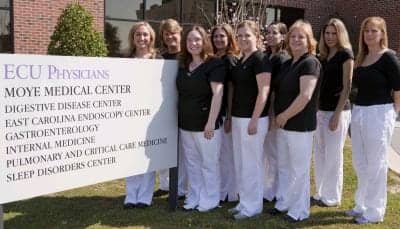Home sleep testing policy continues to take shape with ongoing developments. In the latest move, all four Durable Medical Equipment Medicare Administrative Contractors (DME MACs) released Local Coverage Determinations (LCDs), spelling out their coverage criteria for positive airway pressure (PAP) and offering clarification and restrictions on home testing policies.
While the awaited LCDs brought clarity, the restrictions imposed limitations that home testing advocates say defeat the purpose of performing portable monitoring—to offer greater access to OSA diagnosis.
“CMS stated the intention for accepting portable monitoring was to increase access, reduce the cost of sleep studies, and achieve a significant savings in the treatment of comorbidities associated with sleep apnea. That was their intention,” says Terry Murphy, director of sales, North and South America, Embla. “Now, the LCDs, because of the system we have, has basically said that the people who are most likely to provide open access are not going to be able to be involved in the study in any way, shape, or form, and that is the DME. They [the local carriers] basically gutted the intent,” Murphy says, responding to the provision that states, “No aspect of an HST, including but not limited to delivery and/or pickup of the device, may be performed by a DME supplier.”
The American Academy of Sleep Medicine is currently reviewing the LCDs and has not released an official position on the policies.
Key policies in the NHIC, CIGNA, Noridian, and National Government Services LCDs are the same, industry experts say. The policies offered clarification on what type of testing is covered; who may interpret a study; and criteria for CPAP coverage, facility-based and unattended portable monitoring, and continued coverage.
The physician community is pleased to see clarification on the continued coverage rule, but questions remain about the policy. The LCDs state:
Continued coverage of a PAP device (E0470 or E0601) beyond the first three months of therapy requires that, no sooner than the 61st day but no later than the 91st day after initiating therapy, the treating physician must conduct a clinical re-evaluation and document that the beneficiary is benefiting from PAP therapy.
Questioning the policy, Phillip Porte, executive director, Sleep Manufacturer’s Alliance, says, “Let’s assume that a patient is compliant and the standard of care, once therapy has started, is to see the patient in 30 days. Every indication is that the patient is compliant. This rule from CMS says that you have to see the patient again in another 30 to 60 days. Why do we need to see a compliant patient?” Porte asks. “Why spend the money for that second patient visit?”
While the LCD has raised questions, others were answered, including:
Who can interpret a test?
According to the LCDs, all sleep tests must be interpreted by a physician who is either:
• A diplomate of the American Board of Sleep Medicine (ABSM); or,
• Diplomate in Sleep Medicine by a member board of the American Board of Medical Specialties (ABMS); or,
• An active staff member of a sleep center or laboratory accredited by the American Academy of Sleep Medicine (AASM) or The Joint Commission (formerly the Joint Commission on Accreditation of Healthcare Organizations—JCAHO).
What tests are approved for PAP coverage?
“Coverage of a PAP device for the treatment of OSA is limited to claims where the diagnosis of OSA is based upon a Medicare-covered sleep test (Type I, II, III, IV or Watch-PAT 100),” the coverage determinations state. Please see links below for definitions of channels and complete LCD text.
The CIGNA policy covers Alabama, Arkansas, Colorado, Florida, Georgia, Louisiana, Mississippi, North Carolina, New Mexico, Oklahoma, Puerto Rico, South Carolina, Tennessee, Texas, Virginia, Virgin Islands, and West Virginia. The policy can be found here.
The NHIC policy covers Connecticut, District of Columbia, Delaware, Massachusetts, Maryland, Maine, New Hampshire, New Jersey, New York, Pennsylvania, Rhode Island, and Vermont. The policy can be found [removed]here[/removed].
The Noridian policy covers Alaska, Arizona, California, Hawaii, Iowa, Idaho, Kansas, Missouri, Montana, North Dakota, Nebraska, Nevada, Oregon, South Dakota, Utah, Washington, and Wyoming. The policy can be found here.
National Government Services’ policy affects Minnesota, Wisconsin, Illinois, Michigan, Indiana, Ohio, and Kentucky. The policy can be found here.


